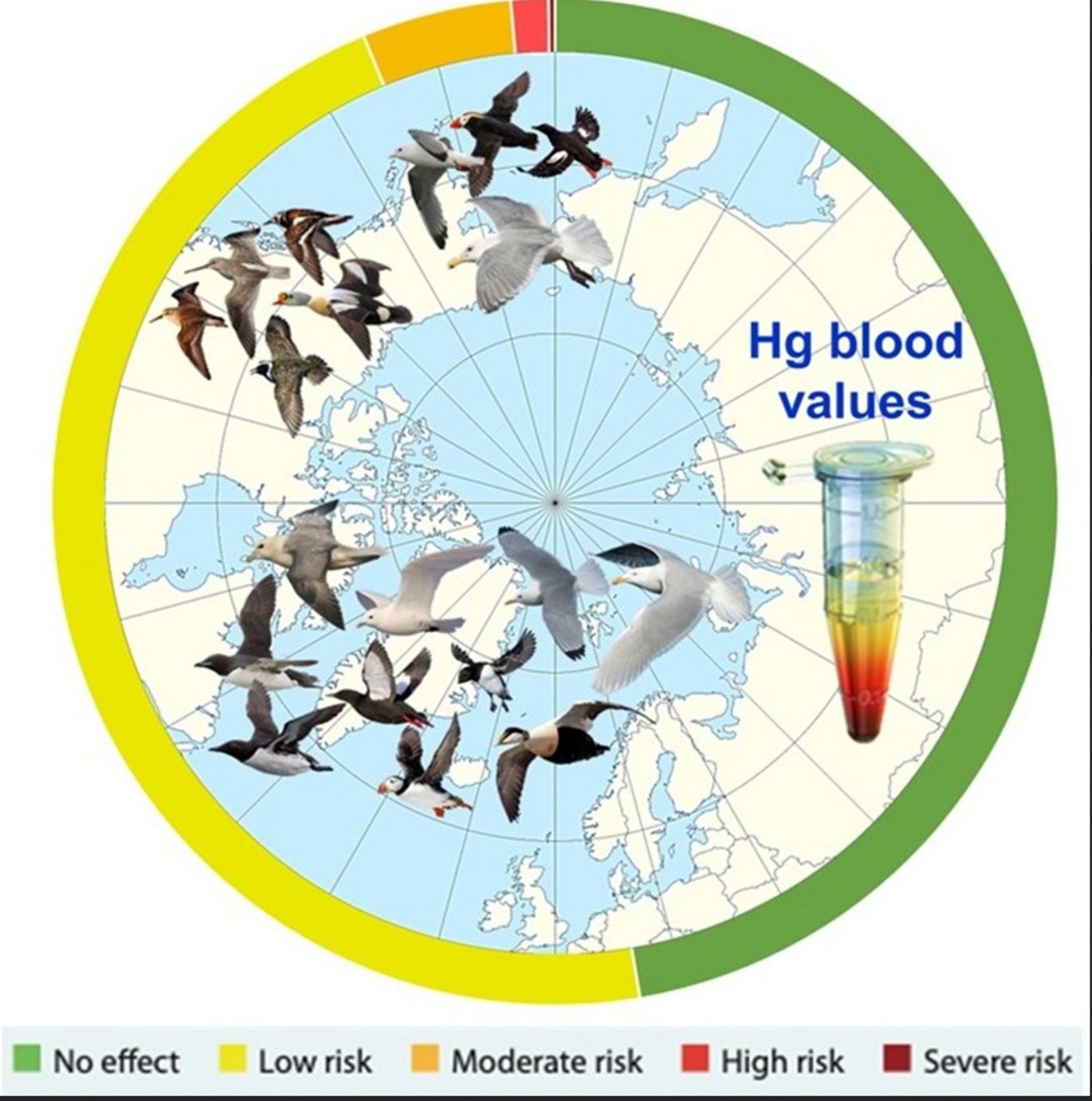Mercury contamination and potential health risks to Arctic seabirds and shorebirds
New publication by OlivierChastel, Jérôme Fort, Joshua T. Ackerman et al.

Abstract:
Since the last Arctic Monitoring and Assessment Programme (AMAP) effort to review biological effects of mercury (Hg) on Arctic biota in 2011 and 2018, there has been a considerable number of new Arctic bird studies. This review article provides contemporary Hg exposure and potential health risk for 36 Arctic seabird and shorebird species, representing a larger portion of the Arctic than during previous AMAP assessments now also including parts of the Russian Arctic. To assess risk to birds, we used Hg toxicity benchmarks established for blood and converted to egg, liver, and feather tissues. Several Arctic seabird populations showed Hg concentrations that exceeded toxicity benchmarks, with 50 % of individual birds exceeding the “no adverse health effect” level. In particular, 5 % of all studied birds were considered to be at moderate or higher risk to Hg toxicity. However, most seabirds (95 %) were generally at lower risk to Hg toxicity. The highest Hg contamination was observed in seabirds breeding in the western Atlantic and Pacific Oceans. Most Arctic shorebirds exhibited low Hg concentrations, with approximately 45 % of individuals categorized at no risk, 2.5 % at high risk category, and no individual at severe risk. Although the majority Arctic-breeding seabirds and shorebirds appeared at lower risk to Hg toxicity, recent studies have reported deleterious effects of Hg on some pituitary hormones, genotoxicity, and reproductive performance. Adult survival appeared unaffected by Hg exposure, although long-term banding studies incorporating Hg are still limited. Although Hg contamination across the Arctic is considered low for most bird species, Hg in combination with other stressors, including other contaminants, diseases, parasites, and climate change, may still cause adverse effects. Future investigations on the global impact of Hg on Arctic birds should be conducted within a multi-stressor framework. This information helps to address Article 22 (Effectiveness Evaluation) of the Minamata Convention on Mercury as a global pollutant.
